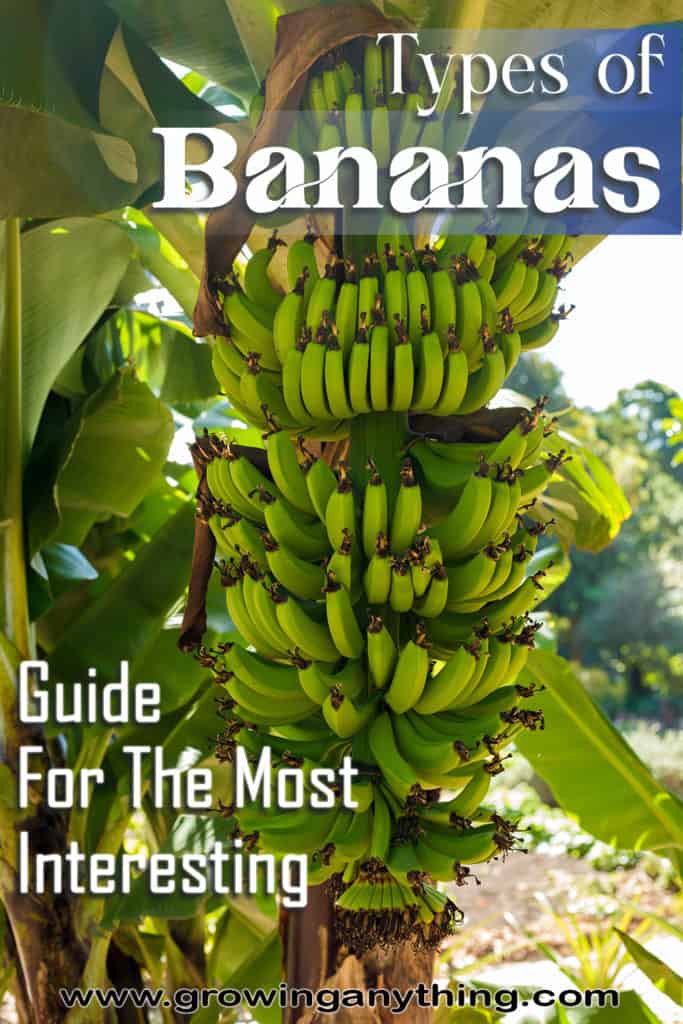20 Difference Types of Bananas
Did you know there are more than 1.000 types of bananas out there? I guess not! Half of that isn’t edible, and the other half is rare, so most people don’t have access to them. Today, let’s talk about the most impressive varieties of bananas, their features, origin, and more.
After the article, you’ll be able to identify bananas you find in your local grocery store or the shops with exotic items!
Varieties of bananas differ by their look, texture and taste. Nowadays, most stores sell Cavendish bananas. But, in the past, some creamier and sweeter bananas were more available.
Available bananas today come from Central America, more specifically, Costa Rica, Ecuador, Panama. It is because bananas only grow in hot and humid climates, such as there.
Keep reading to learn about interesting banana varieties!
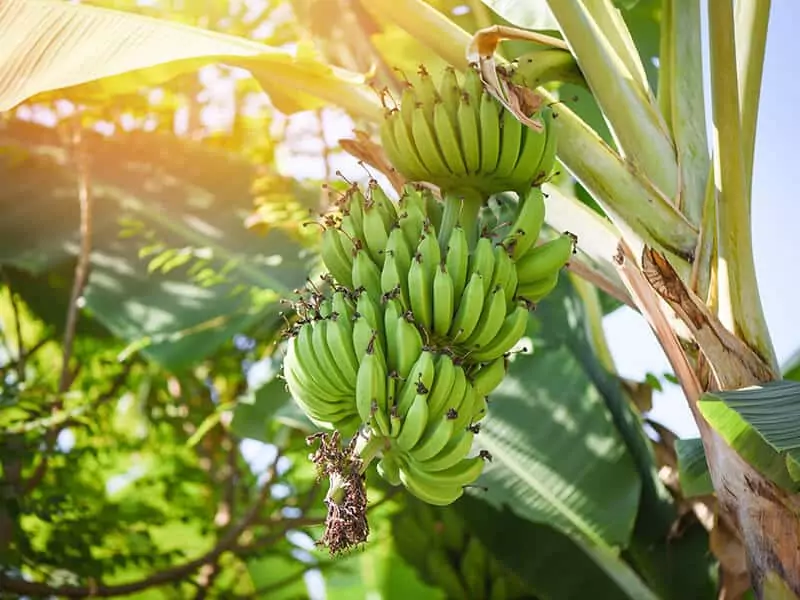
1 Burro Banana
Orinoco Musa or Burro banana is one of the superior varieties because of its resilience to harsh winds. Burro bananas are sometimes chunky bananas because they have a unique square shape. The fruit has a rich green peel, which turns yellow with brown spots as the fruit ripens.
The taste is creamy and sweet, with a slight lemon aroma. Burro bananas are commonly used fresh and in national cuisines, such as the Caribbean, Thai, and Filipino.
Burro bananas are healthy as well. They can help with anemia because they stimulate hemoglobin production!
2 Cavendish Banana
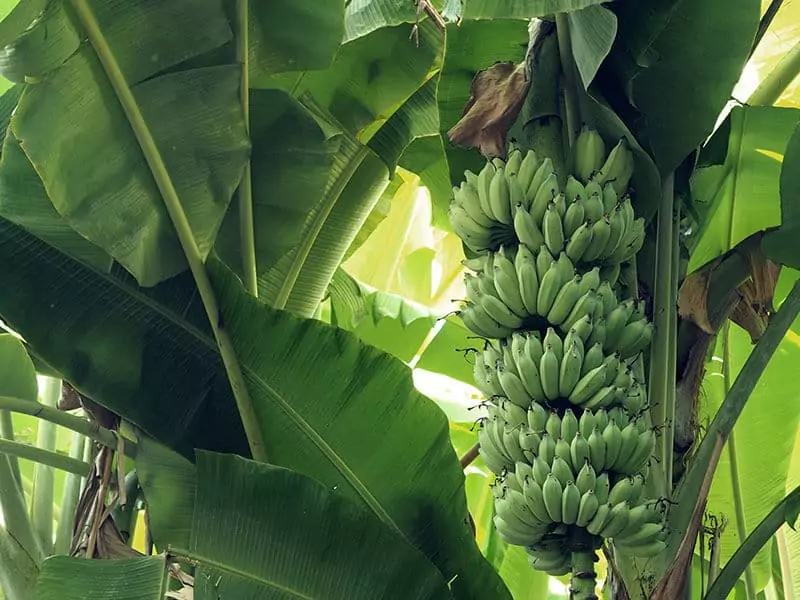
Musa acuminata Cavendish Subgroup or simply Cavendish banana is the banana you can find in every supermarket. Cavendish bananas replaced the Big Mike variety in popularity and mass-production because the Big Mike type was wiped out because of viral disease. However, Cavendish bananas are prone to diseases, which makes their existence and popularity questionable.
Cavendish bananas are eaten raw, in fruit salads and sweets.
Another interesting fact about the Cavendish variety is that they aren’t propagated. Cavendish bananas are clones.
3 Fe’i Banana
Musa troglodytarum or Fe’i bananas are native to New Guinea and other Pacific Islands. The variety is rare and different from other types because of its unique appearance. Fe’i bananas are red and smaller than most banana types.
They are still the subject of research, and more information about the cultivar is yet to be obtained.
4 Gros Michel Banana
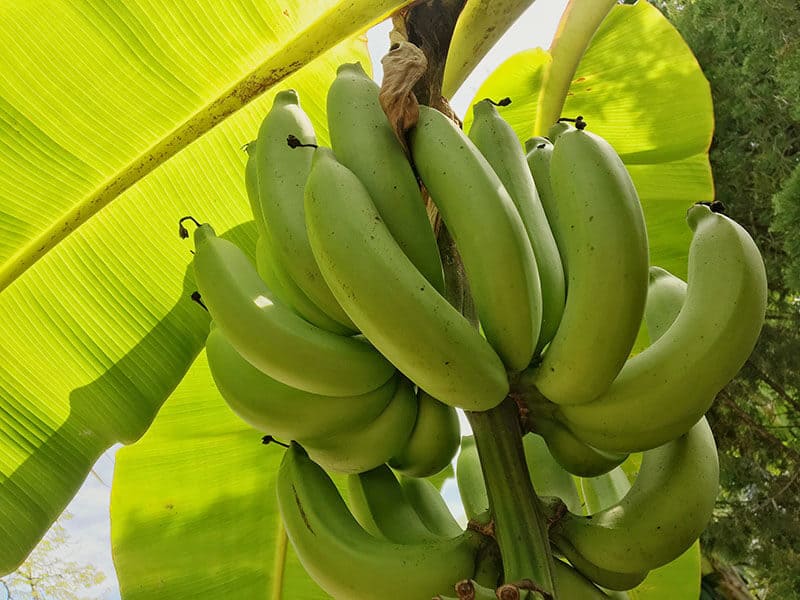
The Gros Michel banana or Big Mike variety was a widely available banana type until the 1950s. The fruit looks like Cavendish bananas with a characteristic half-moon shape and yellow fleshy peel, but the taste is significantly sweeter.
Nowadays, people struggle to find Gros Michel bananas on the market. You can pre-order packs of Gros Michel bananas at some shops, and they will deliver the fruit when it is in season.
5 Lady Finger Banana
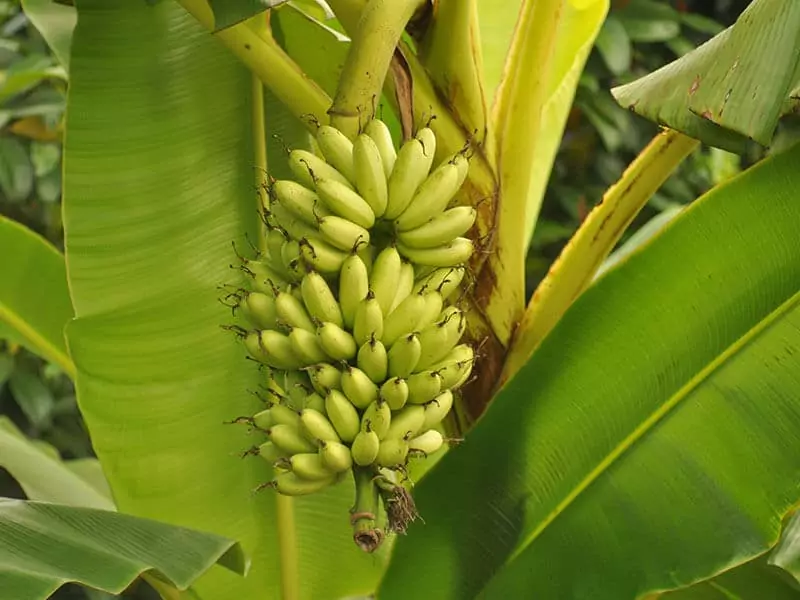
Lady Finger Bananas are called baby bananas because they are half the size of Cavendish bananas. The average size is about three inches.
Baby bananas are creamy and sweet, with slightly detectable aromas of honey. They are the best choice for banana cakes because of the texture.
Lady Finger bananas come from Australia and aren’t technically a tree. Most of them grow as perennial shrubs!
6 Pisang Raja Banana
Pisang Raja banana features a thicker texture than most varieties. When Pisang raja fruit is ripe, it doesn’t have starch!
The pulp of Pisang Raja bananas is darker and almost orange. Many people believe Pisang Raja bananas are best for cooking, but they might be tough to track down.
7 Praying Hands Banana
Praying hands banana got the name because of its unique appearance. Two fruits meet together at one point and resemble the look of praying hands! But, each hand contains several single bananas.
Praying hands bananas are native to Indonesia and rare. Because they look unlike any other banana or fruit, they are a collector’s delight. They are wind resistant and people can grow them in Florida as well.
Praying hands bananas have a high visual impact. Therefore, they can improve the landscape and make your meal sweeter.
Lastly, Praying hands bananas are healthy. These contain high levels of fiber and potassium, vitamin B-complex, magnesium, and vitamins A and C. In addition, Praying hands bananas are a great source of phosphorus, iron, calcium, zinc, and copper.
They bear fruit in the winter months.
Watch this video to know more:
8 Goldfinger Banana
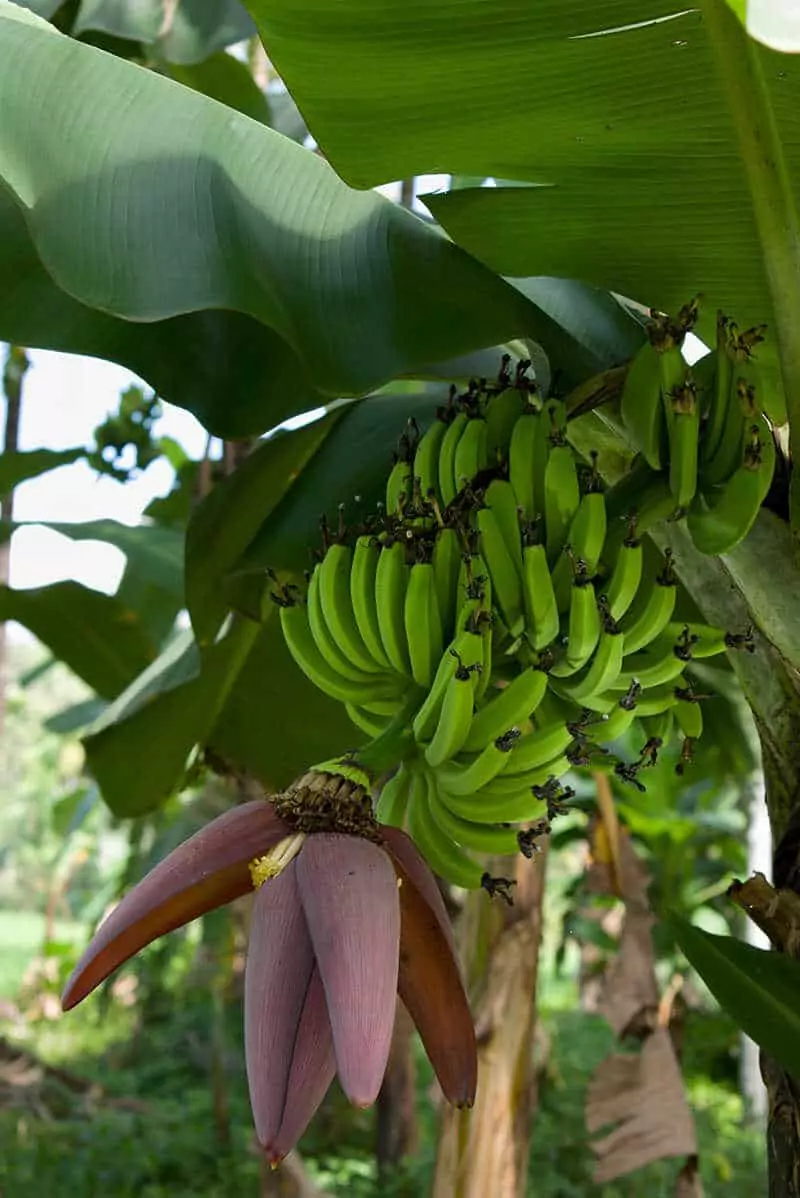
Goldfinger Banana has a distinct apple flavor. You can eat them fresh or cook them when they are green. The best way to cook Goldfinger bananas is to boil or deep-fry them!
Interestingly, most Goldfinger banana plants are grown from a clone of a healthy parent plant. The clones are resistant to cold and harsh winds. Compared to other banana trees, the Goldfinger banana tree is considered a dwarf. It usually grows up to eight feet, but sometimes the tree can reach 15 feet.
Goldfinger bananas have been popular since the end of the 1980s. After planting, the tree bears fruit very soon as long as you provide good conditions to the plant and a lot of fertilizer.
9 Red Banana
If you really like bananas, get ready for a treat! Red bananas are native to Southeast Asia, and they have the characteristic red skin.
The pulp is soft and delicious. The taste is sweet and similar to Cavendish bananas, but with a unique raspberry aroma!
Red bananas are remarkably healthy Additionally, because of their unique taste, red bananas are a great addition to sweets and savory dishes! Red bananas have high levels of vitamin B6 and C and magnesium, they are a great snack. Moreover, red bananas are rich in antioxidants that improve heart health and your immune system. Too bad red bananas are rare!
Watch this video to know more:
10 Barangan Banana
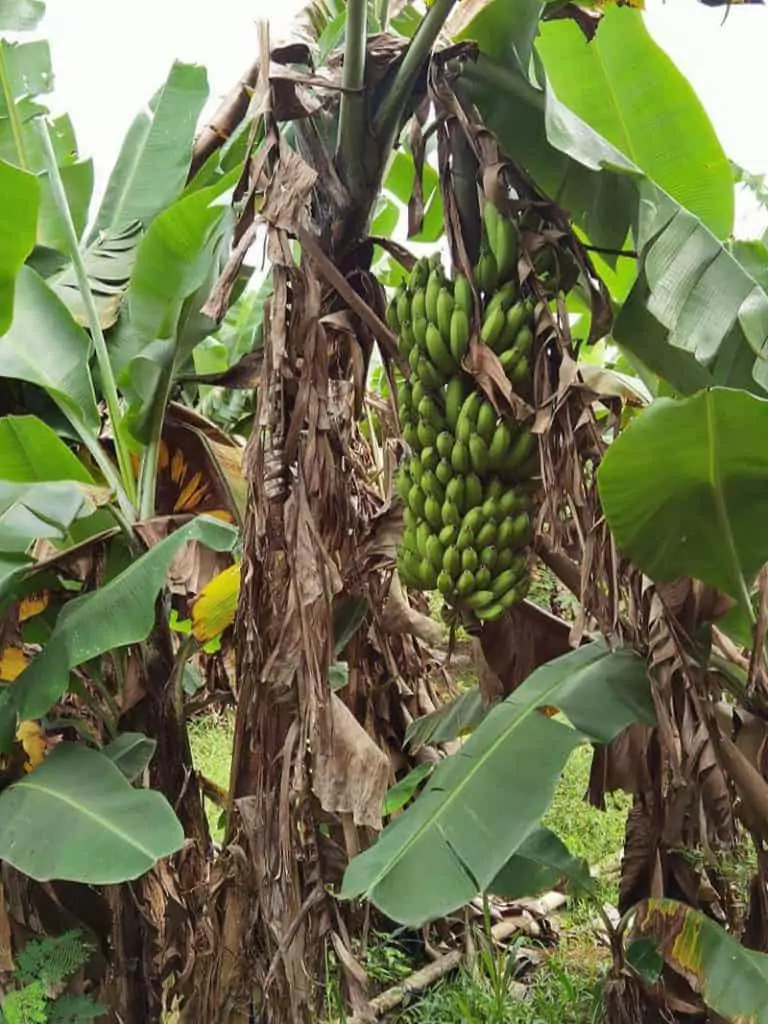
Barangan bananas have sweet and white pulp. Like other bananas, the Barangan variety doesn’t have seeds. The taste is a delicate balance between sweetness and savory and stays delicious when the banana is fried or boiled. Therefore, it is great for healthy desserts!
The variety comes from North Sumatra and Malaysia and has a lot of beneficial vitamins and proteins.
In its native habitat, the Barangan banana is available year-round.
It is a sub-spec of the Pisang variety.
11 Manzano Banana
Manzano bananas have a complex taste. In addition to the characteristic banana taste, these fruits feature apple and strawberry aroma. Manzano bananas turn black as they are ripe. They are most delicious when the yellow peel gets black spots.
Manzano bananas are used for fruit salads, banana bread, fresh, in smoothies and healthy banana chips!
An average fruit is about four inches long with pale skin.
12 Mysore Banana
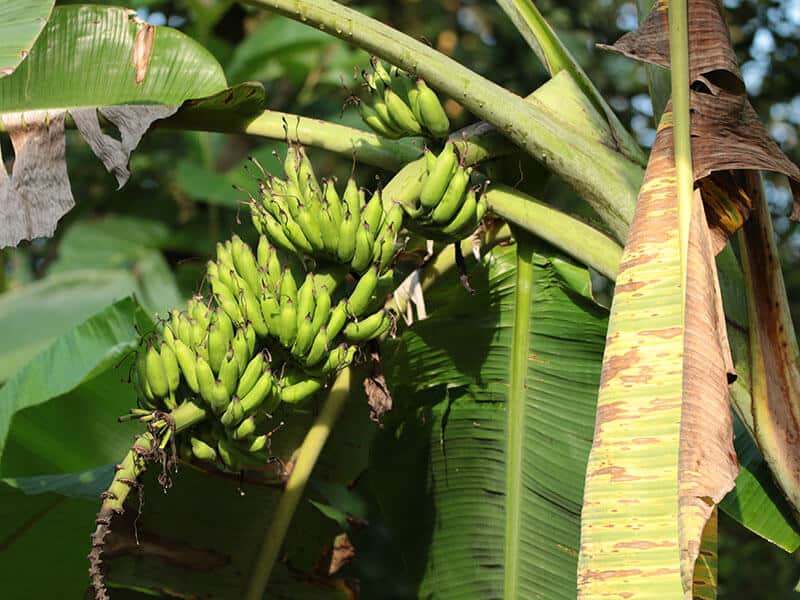
Mysore bananas are delicious and best known for their thin skin. They have slightly different shapes than most banana types. The average fruit is short and fat, and roundish.
Because of the standout sweetness, Mysore bananas are used as dessert bananas. People also call them berry bananas because they have a slightly tangy flavor and texture that resembles berries.
Mysore bananas aren’t easy to find. Try at local farmers’ markets or specialty shops.
13 Blue Java Banana
Blue Java bananas are maybe the creamier and most delicious bananas on the list. Their taste resembles vanilla ice cream! So, next time you crave some ice cream, try Blue Java banana. It is a much healthier choice.
Blue Java bananas feature silverish-blue skin when they aren’t ripe. The bluish hue comes from wax coatings. As the fruit ripens, the peel becomes creamy yellow. Ripen fruit isn’t very different from Cavendish banana skin.
The origin of the Blue Java banana is Hawaii, and the variety is sometimes called Ice Cream banana!
14 Silver Bluggoe Banana
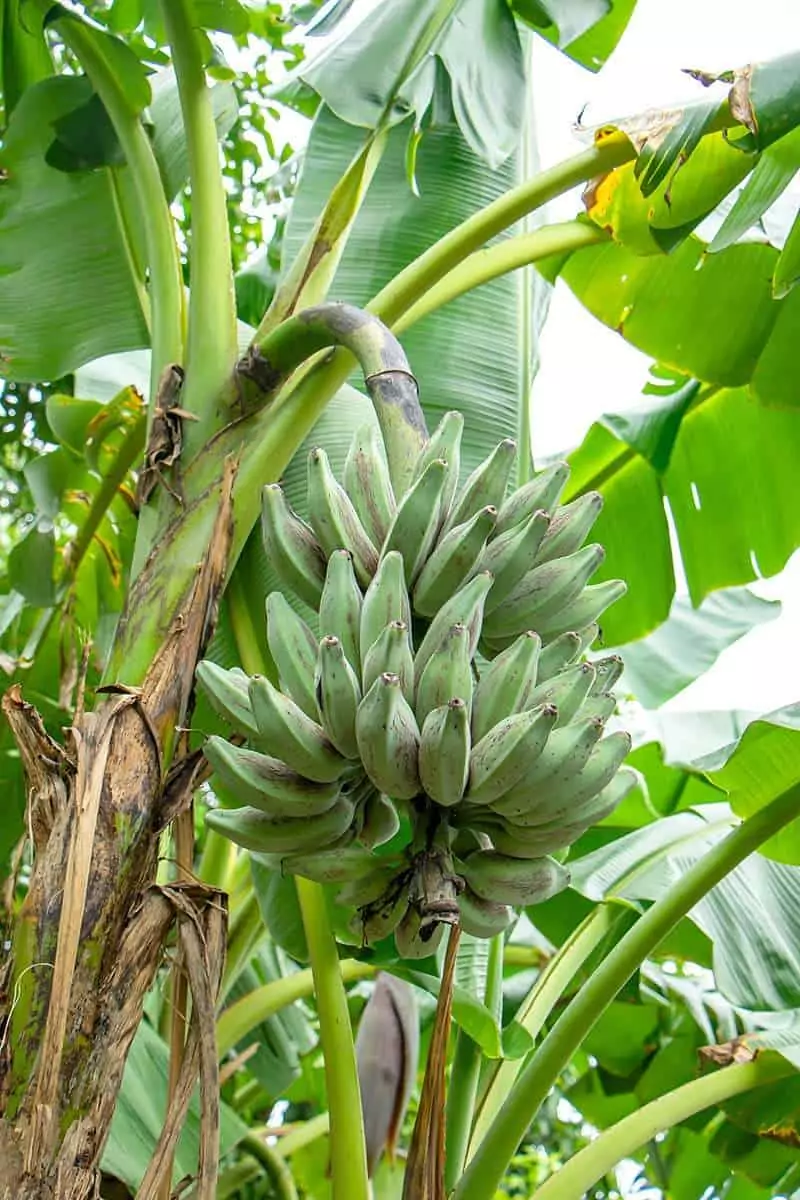
Silver Bluggoe banana originates from Thailand. The plant is perfect for grilling with the skin and a rare variety. Grilled Silver Bluggoe banana develops dark charcoal skin, and the flesh remains soft and delicious. You can find them as street food on the streets of Bangkok! But, you’ll rarely find them in the USA.
15 Scarlet Banana
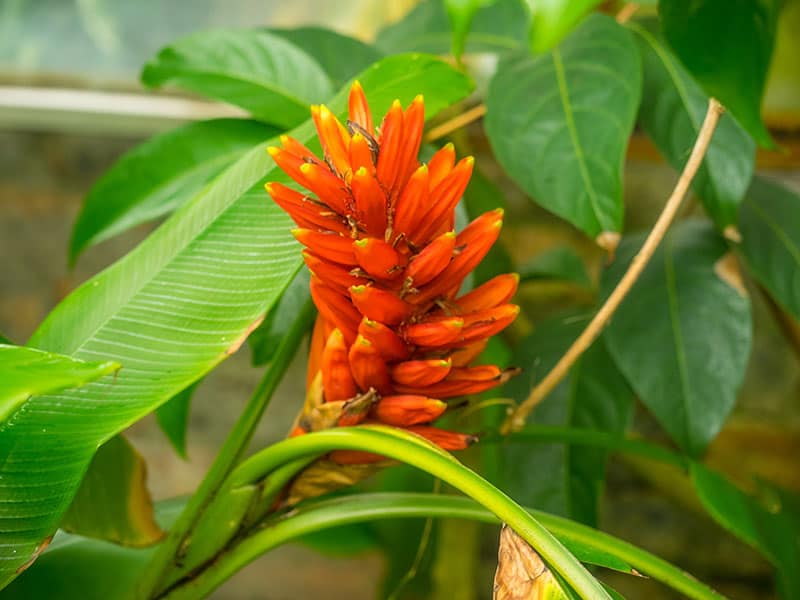
The scientific name of Scarlet Banana is Musa coccinea, and the plant is also called red-flowering banana. The plant is grown for ornamental purposes, because of the lovely clusters of scarlet-red bracts which hold yellow flowers.
Musa coccinea comes from tropical China and Vietnam. The plant has evergreen foliage and is grown as a perennial in its native habitat.
16 Lakatan Banana
The Lakatan banana is native to the Philippines. The plant grows shorter than 10 feet and develops long and wide foliage. The fruits are very much like Cavendish bananas, in the look.
But, Lakatan bananas are more expensive than Cavendish bananas, because they have a firmer texture and sweeter taste. They are considered premium dessert bananas, as they hold their beneficial nutrients when cooked and eaten raw.
17 Rhino Horn Bananas
Rhino Horn Bananas are hybrid banana cultivars, developed in Africa. Their fruits are the longest from all banana varieties, and may get up to two feet! The Rhino Horn banana tree grows between 12 and 20 feet tall and has dappled red foliage.
People use fruits raw or cooked, and grow trees for ornamental value as well.
18 Señorita Banana
Señorita bananas are short and similar to Lakatan bananas in taste. They are so short that you can eat the entire banana in one bite! The Señorita banana tree grows only up to eight feet with waxy leaves, surrounded by purplish borders. Because of this, Señorita banana trees are grown for ornamental value, use in landscaping and for delicious fruits.
These bananas are native to the Philippines. But, because they are prone to diseases, there is a mass-production of them. You may find them in local farmers’ markets and rural areas in the Philippines.
19 Matoke Banana
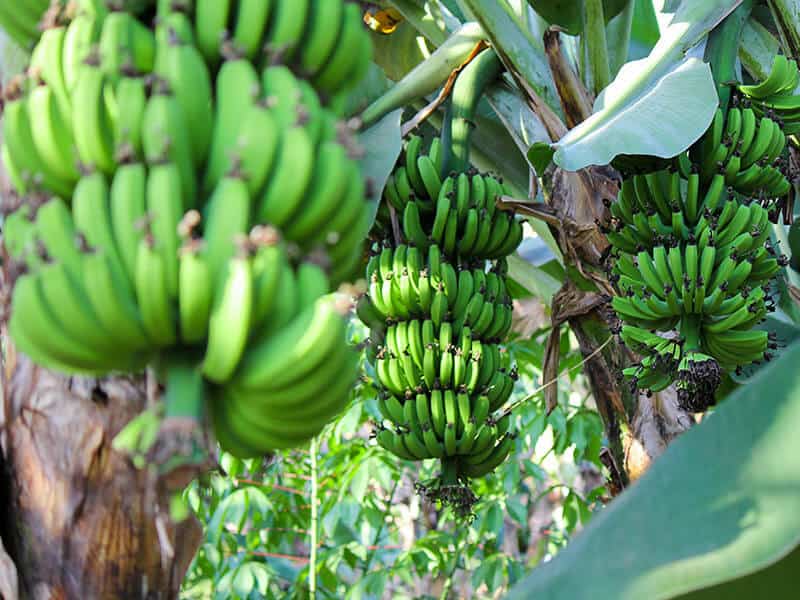
Matoke bananas are popular in Uganda and Rwanda. People mash them after steam-cooking. Mashed Matoke banana is part of the national cuisines of these countries.
The fruits are small and pair well with a majority of exotic spices. Because they have green skin, people also refer to them as green bananas.
You should see the video below:
20 Grand Nain Banana
Grand Nain bananas are similar to Cavendish bananas in look and taste. It is a sub-spec of the Cavendish cultivar. The plant is also known as Chiquita banana, named after the most extensive global manufacturer of the variety – Chiquita Brands International.
The tree is somewhere between the standard Cavendish tree and the Dwarf one. Similar to other banana trees, the Grand Nain tree develops large oblong leaves and inflorescences. Later, the inflorescences transform into edible and delicious fruits!
Bananas: Many People Favorite Fruit and Dessert
Oh, those lovely bananas! All banana varieties are packed with plenty of beneficial nutrients and should be regular in your diet. However, bananas also have a high content of carbohydrates, so limit the daily intake if you are trying to lose weight.
As you can see, there are plenty of interesting varieties, praised either for their delicious fruits, appearance or both! Next time you come across some of the exotic banana varieties, don’t miss a chance to try them! You won’t regret it!
If you learned something new from my article, please consider giving it a thumbs up! You can also share the article with your friends and family!
